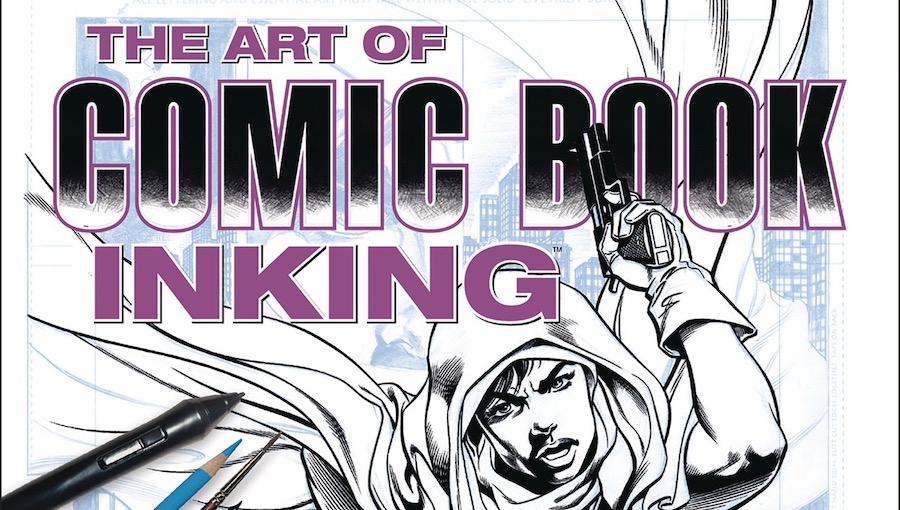I feel that when I’ve done my job correctly, my contribution should be invisible. – Terry Austin
One of the mysteries in the comic book industry is what an inker does. After years of being asked that question, author and artist Gary Martin wrote The Art of Comic Book Inking to enlighten comic book creators and fans as to just exactly what inkers do; however, beyond that baseline question, Martin notes that this book will help individuals interested in becoming inkers, inkers without professional training, pencillers who want to improve their working relationship with inkers, and industry editors. Additionally, he states that in his first edition (1997), “Some of my original goals for writing this book were to help preserve the craft of traditional inking and encourage appreciation of the art form.”
Martin starts with a glossary of terms and then an introductory chapter that provides an overview of the tools of the trade. He follows up with several chapters going over inker techniques: line weights, contour lines, spotting blacks, feathering, crosshatching, shadows, backgrounds, textures, and more. Martin includes several reference images that will be helpful for the inker.
“Secrets of the Stars” is the most crucial chapter of this book. Martin includes several penciled single pagers from comic books and splash pages from well-known and respected pencillers/illustrators, followed by a variety of established inkers appling their craft to the pages. Each artist discusses which tools they use and the techniques they employ. By sharing their best practices, they provide important insight that can assist new inkers, as well as experienced inkers looking to improve their craft. Additionally, they also impart stories of working with pencillers and, more generally, observations on how creating comics has changed over the years.
Vitali Iakovlev’s chapter on “Digital Inking” is a timely addition to this expanded edition. While Brent Anderson, Terry Dodson, and Randy Green discuss in-depth the desktop software they utilize for their craft, Warren provides a review of Affinity Photo on his iPad Pro. All four have great insight into the benefits and challenges of working digitally.
Finishing off this new edition, Martin has included removable inserts of all of the images discussed in the “Secrets of the Stars” chapter. For inkers, this should be a dream come true to ink for Steve Rude, John Buscema, Jack Kirby, and Gil Kane, as well as Anderson, Dodson, Green, and Warren mentioned above. Martin states that these samples can be used to present one’s work to prospective publishers.
The one weakness to this reference book is that there are no illustrations in the glossary. Martin defines each brush stroke term well, but having small illustrations for each technique would have made it easier for the reader to quickly identify and follow Martin’s call outs in each drawing that follow throughout the rest of the book. Having the visual reference would have also been helpful in “Secrets of the Stars,” so as to be able to pick up the nuances between each inker’s illustration.
The Art of Comic Book Inking demystifies the role of the inker, as well as defines the attributes that an inker should possess. The expanded edition is insightful and an excellent reference book that collects best practices from the industry’s top talent. While this book is focused on inkers, readers who have an interest in reading how the industry has evolved over the decades will also find value in Martin’s book. This title will be released on October 15, 2019.
Creative Team: Gary Martin (author); Steve Rude, Vitali Iakovlev (illustrators); Chris Warner (editor); Patrick Satterfield, Brian Gogolin, Mark Cox, Debra Bailey (book designers); and Chris Horn (digital art technician)
Publisher: Dark Horse Books
Click here to purchase.

